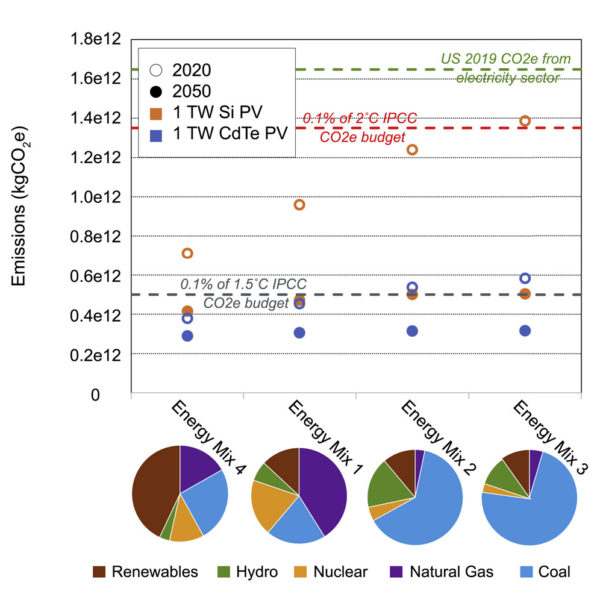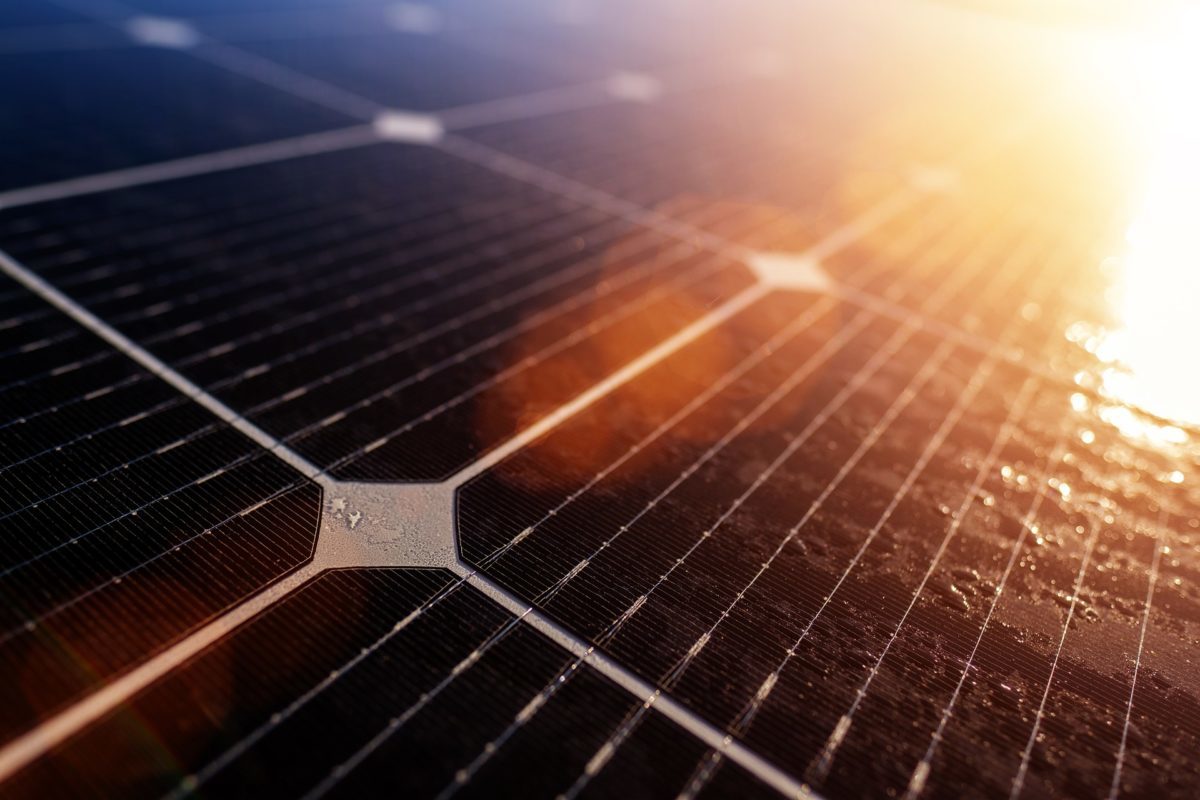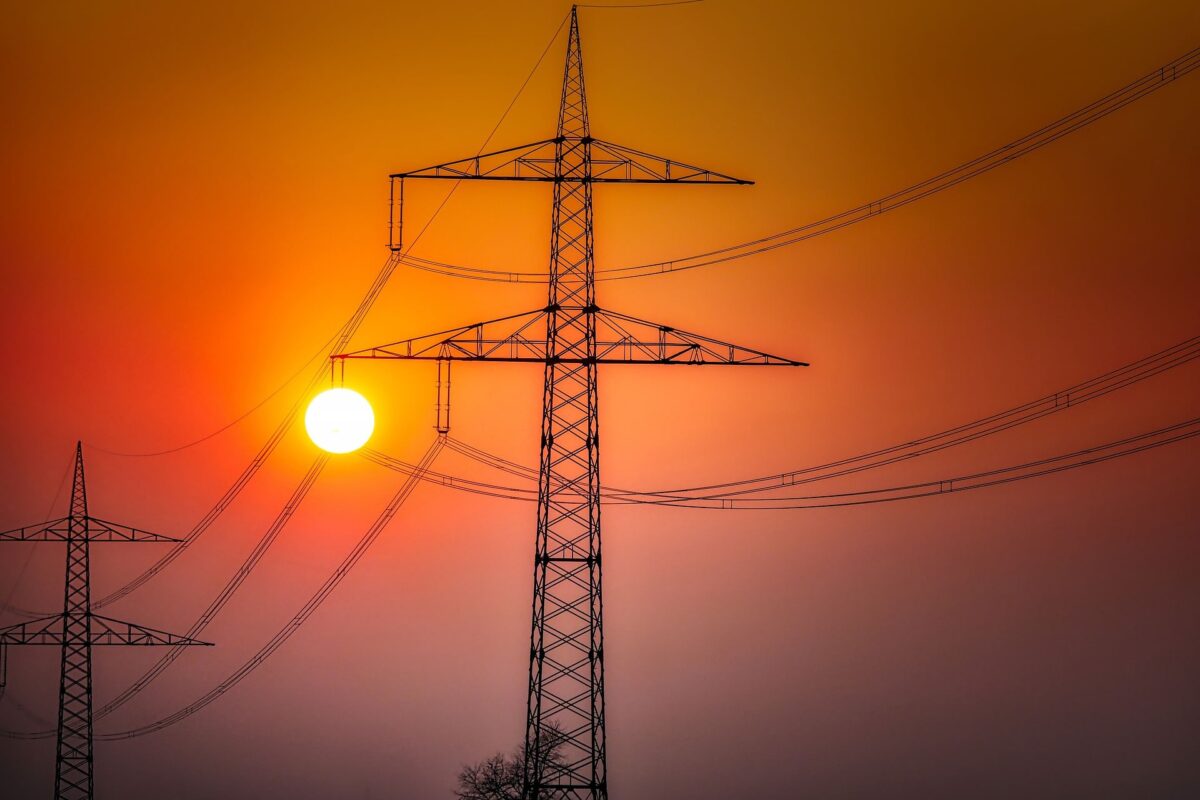Typically, when solar panels are evaluated, traditional metrics like efficiency, cost, levelized cost of electricity, and reliability are used as major benchmarks. As the global economy shifts to adoption of renewable energy, carbon emissions reduction must be kept under focus as a central goal of sustainable development.
Researchers at the National Renewable Energy Laboratory (NREL) are keeping that focus, and recently published new work in Joule that takes solar module assessment to the next level. The studies homed in on “embodied” energy and carbon, which is the sunk energy and carbon emissions involved in manufacturing a PV module. The team also evaluated energy payback periods, or the amount of time that it takes a solar array to generate the same amount of energy that was used to produce it.
“Green technologies are awesome, but as we are working to scale them up to an incredible magnitude, it makes sense to take a close look to see what can be done to minimize the impact,” said Samantha Reese, a senior engineer and analyst in NREL’s Strategic Energy Analysis Center.
In the report, the team evaluated two major types of solar cells: crystalline silicon and cadmium telluride (CdTe). “We combined life-cycle analysis with materials science to explain the emission results for each technology and to examine effects of future advances. We want to use these results to identify areas where additional research is needed,” said Reese.
The report found that applying a cost to carbon could result in a $0.02/W to $0.04/W advantage in CdTe versus traditional silicon cells.
By looking at present-day carbon efficiency on the grid in countries that manufacture solar, the researchers found that a cleaner grid in specific regions can lead to half as much emissions as other regions that use more dirty technologies like coal to power the grid. And, though silicon-based solar cells currently dominate the market, emerging thin-film PV technologies like CdTe and perovskites provide another path to cutting carbon intensity in half again.

“If we want to hit the decarbonization goals set by the Intergovernmental Panel on Climate Change, as much as a sixth of the remaining carbon budget could be used to manufacture PV modules,” said NREL researcher Matthew Reese. “It’s a massive amount of manufacturing that has to be done in order to replace the energy sources being used today.”
Recently, Maxeon Solar Technologies announced the milestone of exceeding the energy payback period 100 times over the 40-year life cycle of its Maxeon 3 series of solar panels and an energy payback period as little as 47.5 days.
“One of the big strengths of PV is that it has this positive feedback loop,” said Nancy Haegel, center director of NREL’s Materials Science Center. “As we clean up the grid—in part by adding more PV to the grid—PV manufacturing will become cleaner, in turn making PV an even better product.”
This content is protected by copyright and may not be reused. If you want to cooperate with us and would like to reuse some of our content, please contact: editors@pv-magazine.com.









By submitting this form you agree to pv magazine using your data for the purposes of publishing your comment.
Your personal data will only be disclosed or otherwise transmitted to third parties for the purposes of spam filtering or if this is necessary for technical maintenance of the website. Any other transfer to third parties will not take place unless this is justified on the basis of applicable data protection regulations or if pv magazine is legally obliged to do so.
You may revoke this consent at any time with effect for the future, in which case your personal data will be deleted immediately. Otherwise, your data will be deleted if pv magazine has processed your request or the purpose of data storage is fulfilled.
Further information on data privacy can be found in our Data Protection Policy.